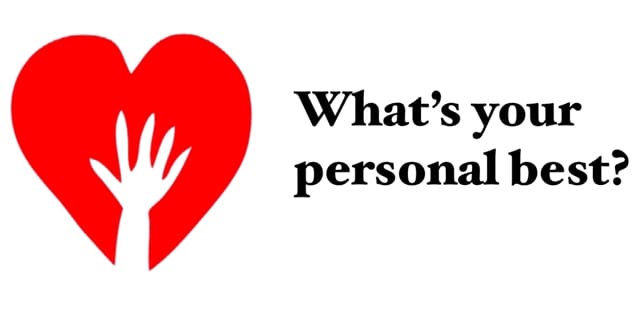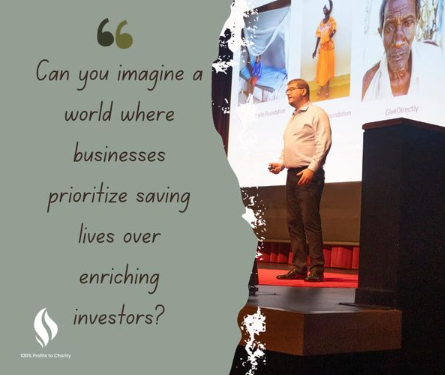Charlie Bresler, Executive Director of The Life You Can Save, blogs about strategies for working toward our personal bests in our efforts to fight global poverty.
Peter Singer and the effective altruism movement challenge all of us to give more to the least fortunate—and to give more effectively. Virtually all of us, including myself, could live a sparer lifestyle in order to reduce more unnecessary suffering and save more lives. Even for many of us who call ourselves effective altruists, giving effectively can still pose a challenge. Too often we tend to respond to the emotional pull of those people and causes closest to us, rather than giving to organizations and causes that have a demonstrated capacity to use donations most effectively. While giving based on our emotional responses and our desire to “repay” causes and institutions we can identify with is normative and natural, the fact remains that many of our behaviors are natural and normative—but still don’t accomplish as much good as they could.
Failure to live up to the most ethical philanthropic standard is just a subset of our overall failure to make optimal decisions in virtually all aspects of our lives – every day! Most of us have an ideal—whether secular or religious—that represents the gold standard by which we attempt to live. We also have goals that relate to matters that are not purely ethical—like how we should look, how we should relate to others, how hard we want to work, and how much we should eat or drink. All of us have failed to live up to our goals at one point or another. Then we reproach ourselves after we have the second piece of cake (sometimes after the first), drink more alcohol than we think we should, get angry rather than “turn the other cheek,” drive too fast, prioritize work over our children, or don’t exercise as much as we should. Or even worse, we choose to overlook our failures by rationalizing our sub-optimal behavior—thus undermining our own pursuit of values we aspire to live up to.
Why do we fail to do what’s right?
There is no single explanation for our repeated failures to “do what is right” by our own standards, or from a strictly rational point of view. As a species, we have an extremely strong tendency to be guided by emotions that move us away from rational decision-making— toward decisions that immediately feel good, but do not fit with our longer-term values or preferences. Psychologists and behavioral scientists have offered different causal explanations, ranging from neuropsychological to reinforcement theories, for our tendency to be guided by short-term consequences. But regardless of the “correct” explanation, we all can accept that our failure to consistently live up to our values and goals is a part of being human.
All of us make behavioral “mistakes” outside the philanthropy realm. The good news is that these mistakes can help us learn about how we choose to donate both our time and money to charitable causes.
Two universal principles of ethical behavior
Most of us accept two simple premises: (1) that every life is of equal value, regardless of whether the person is our own child, lives next door, or is 7,000 miles away and of a different race, and (2) that unnecessary suffering and premature death are bad. But few of us, myself included, consume in a manner consistent with the reality that by consuming less we could dramatically improve, or even save, the lives of others without significantly impacting our own well-being.
Similarly, many of us do not donate our time and money in the proportions that are consistent with these two premises that are axiomatic for most of us. Instead, we spend more money than we need to—despite the fact that this money could be used to do more good than buying those things to make ourselves feel happier in the short run. So how do we manage our behavior and self-concept knowing that we make lots of really bad decisions – decisions that contribute to unnecessary suffering and environmental damage?
Steps to achieving your personal best
I suggest that we embrace either a secular or religious concept of perfection as a guide, knowing how far short of perfect we are and will likely always be. If we want to improve our philanthropic decisions and consumer habits, it helps to have both a short-term and a long-term target.
The fact is that we can save lives and reduce suffering if we give more and give more effectively. This is where the concept of “personal best” comes in. Every coach and aspiring athlete knows that if one measures him or herself against the best in their sport it will be more than a little discouraging. But athletes don’t deny that excellence exists even if they can’t achieve it. They work to improve by measuring each performance not against the ideal, but against their own best previous performance – their “personal best.”
It isn’t helpful to ignore our past shortcomings, even if those shortcomings make you feel badly about yourself. One way to feel better is by doing better than you’ve done before. You will do more good by accepting the reality that your lifestyle, your ways of giving your time and money, could be dramatically improved to accomplish more good.
In the context of philanthropic behavior, what does it mean to achieve your personal best? It is quite simple actually. The ideal, consistent with the two premises above, is to maximize your time and money so as to most effectively help to eliminate unnecessary suffering and premature death. This can be accomplished by giving money to the most effective organizations that are working to accomplish these goals. The Life You Can Save recommends charities, each of which has been demonstrated to be among the most effective anti-poverty organizations in the world.
The next step to achieving your personal best is to commit to donating more money to highly effective organizations than you did last year. This can be done in a variety of ways. For example, you could give the same amount to the organizations you gave to last year and add the new organizations, thus giving more overall. Or you can reduce some of the money you gave to organizations last year and put it into the organizations your research suggests are most effective. How you choose to do this is an individual decision, but the goal, over time, is to make your philanthropy consistent with your goal of doing the most good. Good luck with personal best and here is hoping it helps you with good living and good giving!



